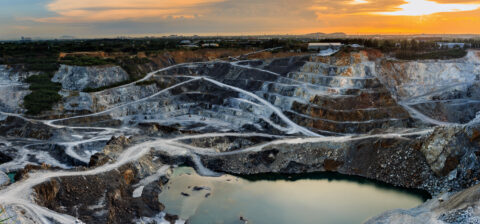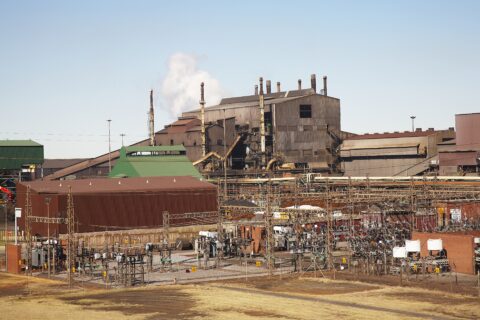SA Mining
Challenges In Unlocking Traditional Funding Options For The Junior Mining Sector
By: Benjamin van der Veen.
The lack of funding from traditional capital sources, such as debt financing and equity investments, has made it necessary for junior mining companies to discover and access alternative funding sources.
Production-based financing has become an increasingly common option for the junior mining sector. Production financing is conducted when companies secure funding by selling a right to future production at a mine.
Unlocking traditional funding options
In a webinar hosted by Mining Review Africa during the COVID-19 lockdown, notable experts in the junior mining field – Errol Smart (CEO of Orion Minerals), Olebogeng Sentsho (Simba Mgodi Mining Incubation Fund), and Grant Mitchell (head of the Junior and Emerging Miners’ Desk: Minerals Council South Africa) – spoke about the challenges that come from unlocking traditional funding options for the junior mining sector, and how to overcome those difficulties.
Mitchell pointed out that, “It is important for a country to create a regulatory environment that is conducive to investing in junior mining companies.”
Using South Africa as an example, he said the regulatory environment was “primarily targeted at large mining companies. The junior sector is growing. However, the regulatory environment doesn’t support them”.
Mitchell suggested that governments should offer some sort of relief for junior mining companies. This could be in the form of a separate code of practice for junior and smaller mining companies, and additional tax incentives to junior companies to create a more considerable appeal for investors to invest in the local junior mining sector.
However, Smart noted that strong junior mining projects would always get good finance, and that the lack of funding wasn’t about government tax incentives or regulatory policy.
“Recent statistics show that Australian companies have substantial mining interest in Africa,” he said, adding that juniors should stop hiding behind excuses about why investment is non-existent.
“At the end of the day, there is a shrinking pool of international financial capital and only the best projects will receive the required funding. Junior mining investment in Africa traditionally comes from Australia and Canada, where both countries are experiencing limited access to financial capital, so for a company to sit back and say there is no money is simply not true. It’s a competitive world out there so juniors have to work hard to secure funding.”
He said junior miners should not “fall in love” with their projects; they should be realistic and be prepared to back only the best ones.
Looking worthy of investment
Adding her thoughts to how junior mining companies could make themselves look more worthy of investment, Sentsho mentioned that there were several key factors that junior miners should account for: “Firstly, they should look at the commodity they are mining – is there a demand for it, or is it a mineral that is in decline?”
Secondly, she said: “Put together a detailed financial model that will make sense to investors. Thirdly, put together a proper prospectus that goes all the way through the value chain. An investor needs to be confident that you have a well-thought-out business model, from exploration through to final productivity.”
She advised that juniors do research into whom they would like to seek international investment from, as investors from different countries have specific requirements that they look for to protect their current and future assets.
It is vital to know an investment company’s objectives, if you wish to attract their interest in those regions or countries where they prefer to invest their money, and what the company looks for in a junior mining company’s leadership team.
Sentsho said to look attractive in order to gain investments, juniors should aim big. “A lot of juniors prefer not to be listed companies. This tells the investors that you are a subsistence miner with no ambition to grow your operation. You just want to mine marginally so that you can make your money and get out.
“The projects that stay in the minds of investors are those with the biggest dreams; it’s those companies who have a well-thought-out business model and financial plan to take their company all the way up to the listing.”
Alternative funding opportunities
While traditional funding sources are drying up for juniors, new cash resources can be found in alternative funding methods.
Sentsho said technology was set to play a significant role in mining with the rise of the Fourth Industrial Revolution and the industrial internet of things. “As such, juniors should use technology platforms such as crowdfunding and blockchain to fund their projects.”
With the increasing push towards moving away from fossil fuels and the increased popularity and presence of electric vehicles (EV) on roads to reduce pollution, one should expect that the lithium-ion battery metals market would be the most attractive to junior mining explorers in Africa.
However, according to Luke Peters, MSA’s senior exploration geologist, exploration in the renewable energy sector is still at an early stage. It is currently reactive to relatively short-term periods of increased demand or, more commonly, to perceptions and forecasts of future demand or supply.
While battery metals exploration is expected to continue to increase in the future, it is still gold and base metals that currently attract the most exploration funding.
Peters said “electric vehicles are here to stay and are riding the growing wave of global public opinion focused on environmental and climatic concerns”.
“It is predicted that around 100 million of these vehicles will be on the road by 2030. We are currently a far cry from that, but when the demand for EVs does increase and the supply is constrained, then we will see a renewed focus on exploration within the battery metals sector.”
And as the demand for battery metals increases, he said, “so there will also be more interest in exploring substitutes and alternatives, and this may be where the future opportunity lies for junior miners”.







 Sign-up and receive the Business Media MAGS newsletter OR SA Mining newsletter straight to your inbox.
Sign-up and receive the Business Media MAGS newsletter OR SA Mining newsletter straight to your inbox.